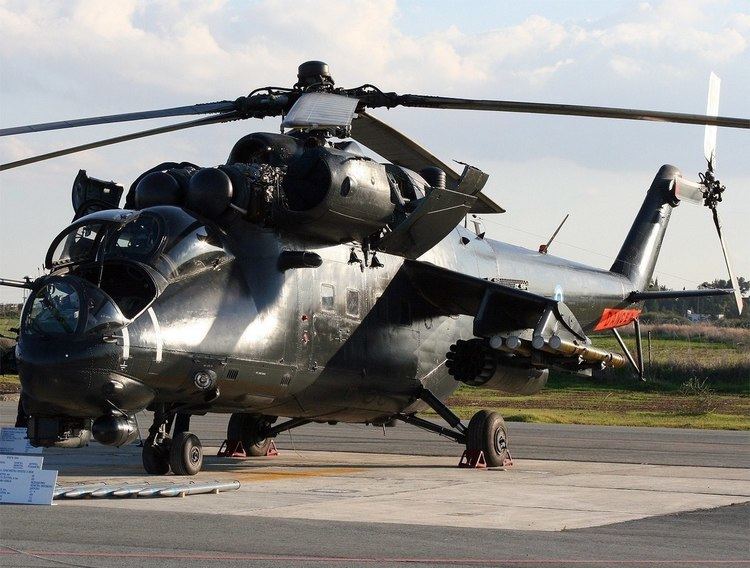Active 12,963 Branch Air Force | Country Cyprus Part of Cypriot National Guard | |
 | ||
Size 20 Helicopters, 2 Systems of UAVs and 2 Fixed Wing Current
commander Βrigadier general Gabriel Dimitriou | ||
The Cyprus Air Command (Greek: Διοίκησης Αεροπορίας Κύπρου, Turkish: Kıbrıs Hava Kuvvetleri) is the armed air wing of the National Guard. This force does not have any fixed wing combat aircraft, but is equipped with attack and anti-tank helicopters, surface-to-air missile and integrated radar systems, as well as Unmanned aerial vehicles (UAV).
Contents
Current Air Force organization
As of 2012 the Cyprus Air Force consists of two helicopter-squadrons along with a UAV squadron equipped with IAI Searcher 2 unmanned aerial vehicles. The Cyprus Air Force also possesses a Search and Rescue Coordination Centre, which is due to equip with its own aircraft. Note that the aircraft of the Cyprus Police operate under a separate command-structure during peacetime.
Air Force bases and stations
Note: In an emergency, Cypriot military and paramilitary aircraft can operate from Paphos and Larnaca international airports, as well as from prepared stretches of motorway equipped with landing zones and with paved operating-areas.
Paphos Incident – 22 October 2000
On 22 October 2000, TOR-M1 air-defence batteries operated by the Cyprus National Guard at Papandreou Air Base tracked a pair of Turkish warplanes detected approaching the air base by "locking-on" to them The action of engaging the Turkish aircraft with radar forced the warplanes to retreat from the area, as Greek Cypriot and Greek forces conducted joint military manoeuvres in the Paphos region. The incident prompted an angry outburst from the Turkish Cypriot leader, Rauf Denktaş, who was reported in the media to have condemned the radar lock-on as a provacation that could lead to war.
Paphos Incident – 5 April 2002
It was variously reported in the Cyprus media that combat radars of the Cyprus National Guard, based at Papandreou Air Base in Paphos, had tracked two Turkish F-16 warplanes at 11am on 5 April 2002, by "locking-on" to them. The two Turkish aircraft were reported to have incurred into the Nicosia Flight Information Region and then passed directly over the Greek Cypriot air base at an altitude of 3500 feet. Upon realising that they were being tracked, the two Turkish aircraft reportedly turned back towards Turkey, and then returned to their airbase.
